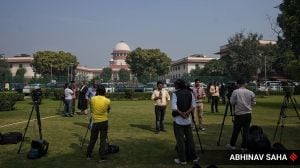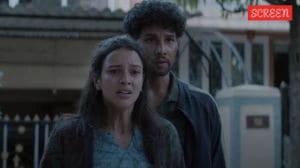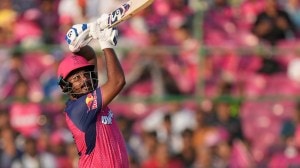ASER 2023 report: In Mohali, 12% youngsters aged 14-18 can’t read class-2 Punjabi text, 40% can’t do division but 98% can use smartphones
The number of females of the age bracket who have smartphones is half as that of males who have the devices.
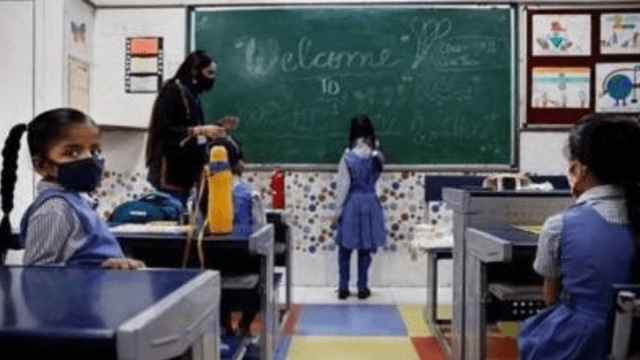 The survey was conducted in 28 districts across 26 states, reaching 34,745 people in the age group of 14-18 years. (Representational/File Photo)
The survey was conducted in 28 districts across 26 states, reaching 34,745 people in the age group of 14-18 years. (Representational/File Photo)In Mohali (SAS Nagar), at least 12 per cent of youngsters aged between 14 and 18 years cannot read basic class-2 level text in Punjabi. While more youngsters can read English than Punjabi, only 10 per cent of the youngsters can’t read four basic English sentences. Only 57.5 per cent can do a basic arithmetic division, but 98 per cent can use smartphones.
These are some major findings of the Annual Status of Education Report (Beyond Basics) 2023 released by the Pratham Foundation in New Delhi on Wednesday. The survey was conducted in 28 districts across 26 states, reaching 34,745 people in the age group of 14-18 years. In Punjab, the ASER 2023 survey was conducted in Mohali by volunteers from the Department of Economics, Panjab University, Chandigarh. In Mohali, 1136 youngsters across 60 villages were surveyed in November-December 2023. Last it was in 2017 that this age group was surveyed under the ASER.
While the results for Mohali are better than the all-district average, the district’s 25 per cent youngsters cannot read basic Class 2 text in their regional languages and only 43.3 per cent can do basic division, shows the survey. Only 57.3 per cent youths can read four basic sentences in English in all surveyed districts across the states, compared to 89.6 per cent in Mohali.
At least 88.7 per cent youngsters in Mohali aged 14-18 years are enrolled in some kind of formal educational institutions, while 11.3 per cent are not enrolled anywhere.
More girls than boys are not enrolled in any higher educational institutions in Mohali. Among 17-18-year-olds, 23.9 per cent males were not enrolled in any formal education institutions compared to 28.6 per cent females. Additionally, 7.3 per cent were enrolled in some form of vocational training and 20.7 per cent were engaged in some work for at least 15 days in the month prior to the survey.
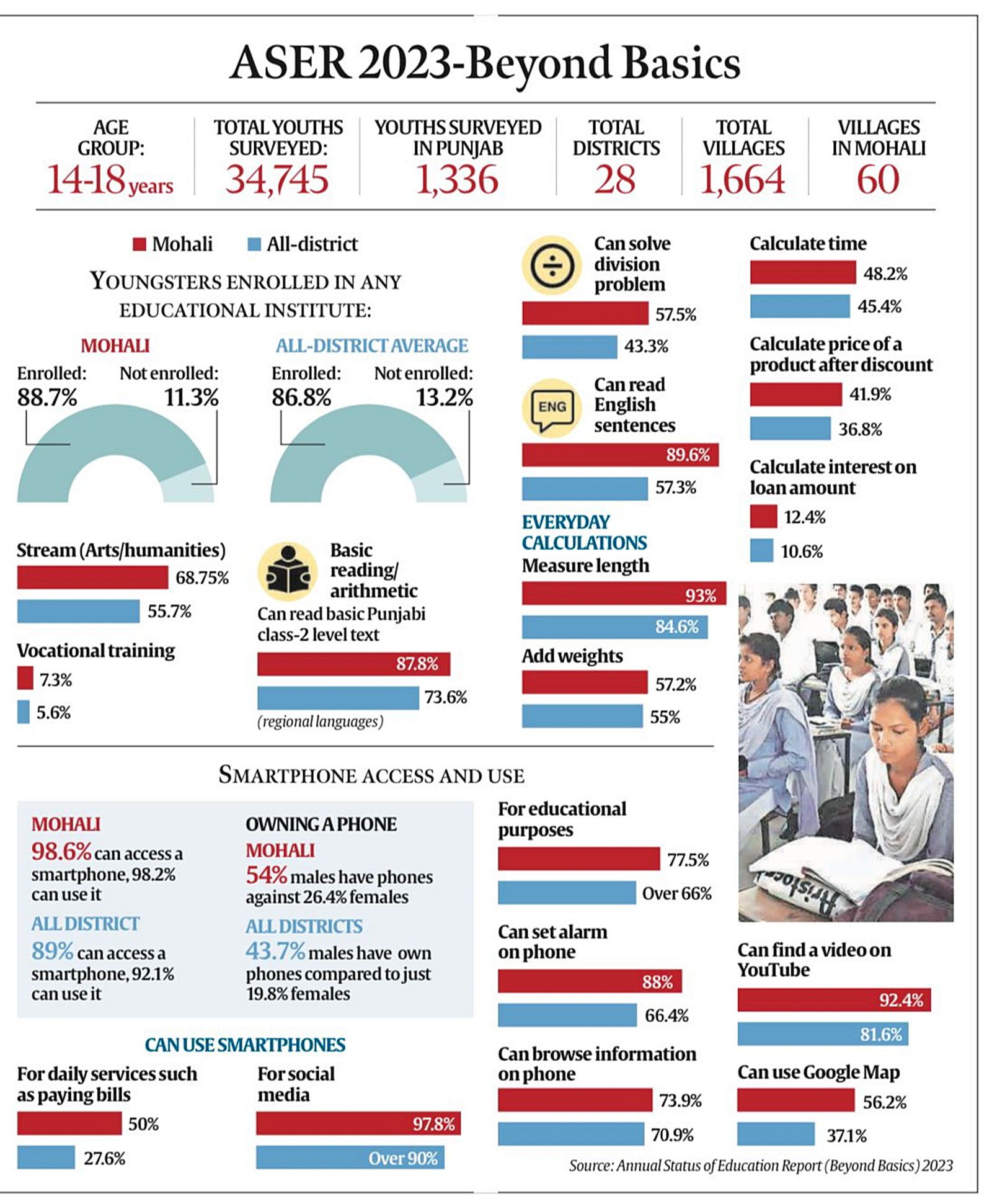 The survey was conducted in 28 districts across 26 states, reaching 34,745 people in the age group of 14-18 years.
The survey was conducted in 28 districts across 26 states, reaching 34,745 people in the age group of 14-18 years.
The survey results for Mohali further reveal that 98.6 per cent of the youngsters have smartphones at home and 98.2 per cent are able to use them. About 54.5 per cent males have their own smartphones compared to 26.4 per cent of female.
While a high proportion of youngsters used social media in the reference week, a far smaller proportion knew how to access its safety features like blocking a profile, making a profile private, etc. In Mohali, 84.4 per cent could bring a smartphone to do digital tasks and of these, 88 per cent can set an alarm, 73.9 per cent can browse the internet. Across all digital tasks, males outperform females, according to the survey results.
Enrollment
At least 88.7% youngsters in Mohali were found to be enrolled in some kind of educational institution, including 55% in government sector. Of 11.3% who were not enrolled anywhere, 13% were females and 9.3% males.
Humanities is the top choice
Similar to the all-district trend, in Mohali too, more youngsters are enrolled in humanities stream. While 68.7% were enrolled in humanities, 12.4% were in STEM (science, technology, engineering and mathematics), 11.2% in commerce and 7.8% were in other streams. Another 7.3% were enrolled in vocational courses, higher than the all-district figure.
Everyday calculations
About 93% youngsters in Mohali were able to measure the length of a key, only 57.2% could add weights across two units (kg plus grams) and less than half (48.2%) could calculate time.
The youths who could read basic class-1 level text were also further tested in reading basic instructions written on a medicine packet and answer four questions. At least 77% respondents in Mohali answered three questions correctly. For respondents who could do basic subtraction, they were made to do everyday financial calculations as well. Only 41.9% youngsters correctly calculated the price of a product after discount while only 12.4% were able to calculate interest on loan amount. Across all calculations, females performed way worse than males.
Digital awareness
In Mohali, 98.6% youngsters have access to smartphones and of them 98.2% know how to use it. However, only 39.2% of them had their own phones, including 54% males and just 26% females. At least 77% of those who had smartphones use it for educational activities at least once a day, 50% also used phones for daily works such as paying bills or booking a ticket and 97% used social media too.
Prabhsimran Singh, state coordinator for Punjab for Pratham Foundation, said, “The overall analysis indicates that close to 90 per cent youth can read simple English sentences which is an advantage and needs to be tapped. The ability to do basic daily tasks involving simple comprehension and financial calculations increases substantially with the ability to do math. Building very basic math skills generates large dividends. Access to smartphones is high and almost every one knows how to use a smartphone. Usage, however, varies considerably by purpose. Most youngsters use smartphones for entertainment, more than three-fourth use it for education-related activities and almost half also use it for daily services.”









